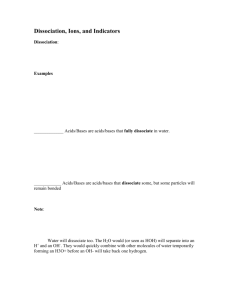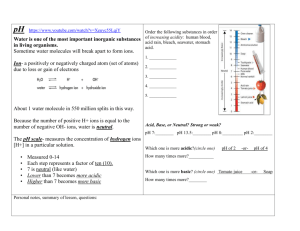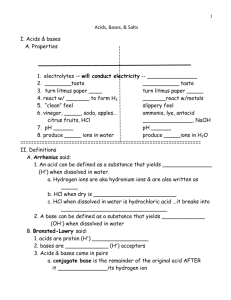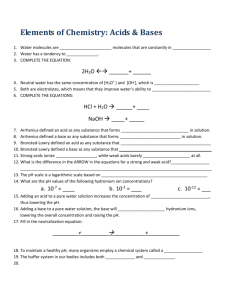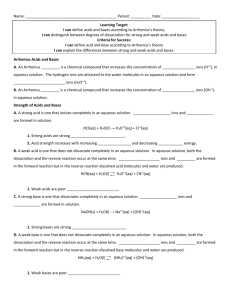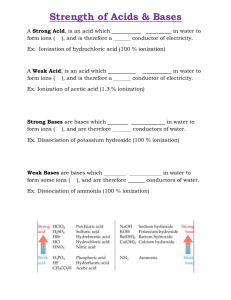Topic 10 - Acids_ Bases_ _ Salts Reg Rev
advertisement
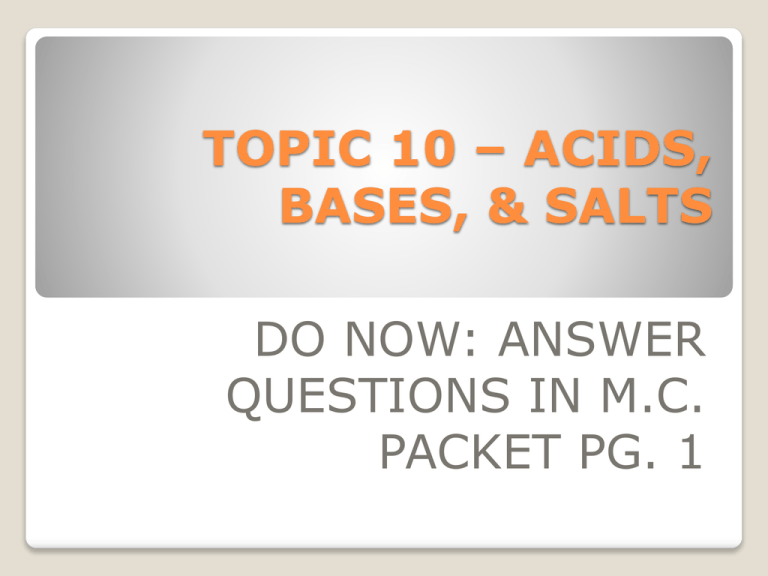
TOPIC 10 – ACIDS, BASES, & SALTS DO NOW: ANSWER QUESTIONS IN M.C. PACKET PG. 1 1. Behavior of many acids and bases can be explained by the Arrhenius theory ◦ Arrhenius acids and bases are electrolytes 2. An electrolyte is a substance which, when dissolved in water, forms a solution capable of conducting electricity The ability to conduct electricity depends on the concentration TOPIC 10 – REGENTS REVIEW 3. Arrhenius acids yield H+ (H3O+) ion as the only positive ion in solution ◦ H+ (aq) ions may also be written as H3O+ 4. Arrhenius bases yield OH- ions as the only negative ion in solution ◦ Organic compounds with OH- are not bases ◦ Ammonia (NH3) is a base TOPIC 10 – REGENTS REVIEW 5. In neutralization reactions an Arrhenius acid react with an Arrhenius base to form HOH and a salt ◦ The net ionic equation for all neutralization reactions is the same: H+(aq) + OH-(aq) H2O(l) 6. Titration is a lab process in which a volume of a solution of known concentration is used to determine the concentration of another solution. It is a practical application of a neutralization reaction TOPIC 10 – REGENTS REVIEW 9. Alternate theory state that an acid is an H+ donor and a base is an H+ acceptor 8. The acidity or alkalinity of a solution can be measured by pH ◦ Low pH indicates a higher concentration of H+ ions than OH- ions ◦ High pH indicates a lower concentration of H+ ions that OH- ions ◦ A neutral pH (7) indicated an equal concentration of both ◦ Pure water has a neutral pH TOPIC 10 – REGENTS REVIEW 9. On the pH scale, each decrease of one pH unit represents a tenfold increase in H+ ion concentration TOPIC 10 – REGENTS REVIEW TOPIC 10 – ACIDS, BASES, & SALTS SUMMARY – ANSWER QUESTIONS IN PACKET

